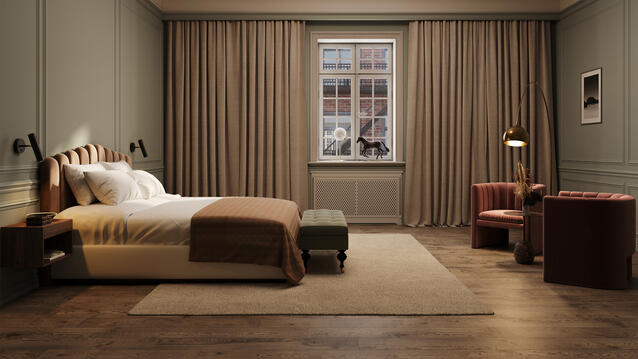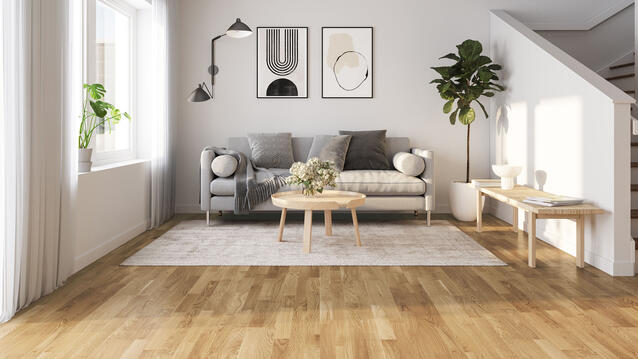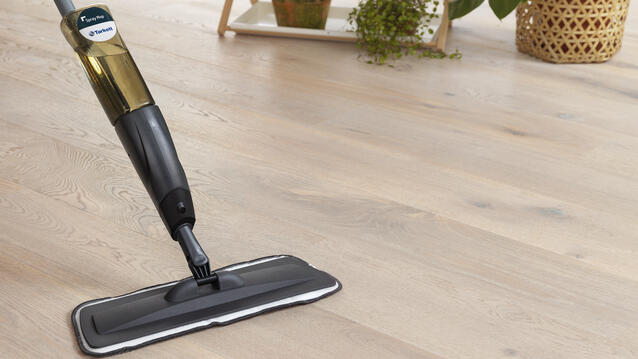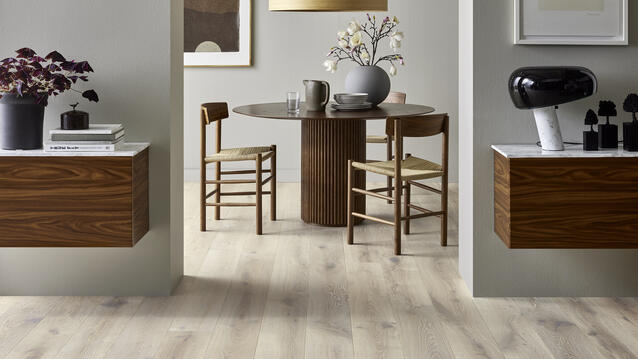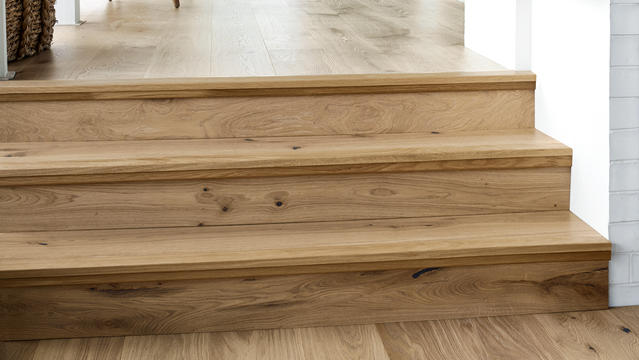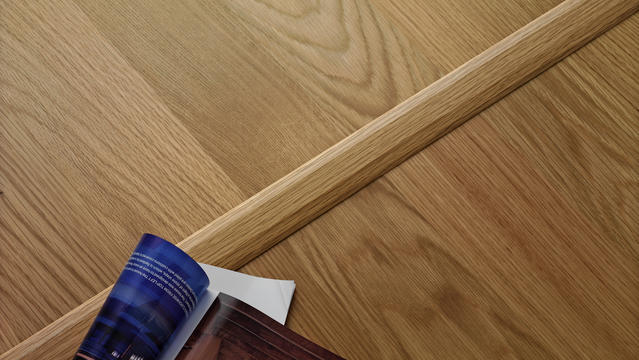
Engineered wood vs laminate flooring
Two popular alternatives to solid wood flooring are laminate and engineered wood flooring. Whilst they do share similarities, there are some key differences between them.
Laminate flooring is made from several layers of compressed materials (high-density fibreboard) strengthened with resin and with a printed image of wood on top covered by a clear wear layer to protect the image.
Engineered wood flooring is made from several layers of wood, with a layer of solid hardwood on top.
At Tarkett, our engineered wood flooring is made completely from real wood with a top layer of hard wood in a variety of species and designs including staining and heat treatment, a strong and supportive middle layer of transverse wood with fibres that contributes to the stability of the boards, and a balancing layer that stabilises the board and guarantees dimensional stability.
Pros and cons of engineered wood
Benefits of engineered wood flooring
Engineered wood is indistinguishable from solid wood because it has a layer of solid hardwood on top. And in the case of Tarkett engineered wood, all three layers are made from real wood, which means the product is completely natural with the authenticity and feel of solid wood.
Because engineered wood is made from different wood layers bonded together in a crosswise direction, it’s less likely to shrink and expand making it stronger and very resistant to warping compared to solid wood flooring. This also makes it much better at dealing with changes in temperature, humidity and moisture.
Engineered wood sometimes needs to be glued to the subfloor. However, Tarkett uses a 2-lock system for most of our ranges, which is easy and quick, making it simple to install our engineered wood floors. It’s a strong glueless locking system, which lock the boards tightly against one another without any gaps, making our floors easy to clean and maintain, and prolonging the beauty and durability of the floor.
Drawbacks of engineered wood flooring
On the downside, since the top layer is real hardwood, it isn’t completely immune to moisture damage.
Caring for engineered wood floors will, therefore, require regular cleaning and periodic maintenance. But then, with good care, engineered wood has a life expectancy of 20-100 years, depending on the quality, proactive maintenance of the product, wear and tear and the traffic in the room.
Pros and cons of laminate
Benefits of laminate flooring
One of the biggest advantages of laminate flooring is the price. Thanks to a special embossing technique that we use to bring out the natural beauty of the wood grain, you can choose to have an all-time favourite classic and classy oak design for example, for a fraction of the cost of the real thing.
It’s also highly durable. Laminate flooring is treated with an extra-strong top layer, which makes it resistant to scuffs, scratches and stains. The smooth top layer also makes it easy to wipe clean. Best of all, the installation is quick and easy, because the laminate boards fold and lock into each other. Because of this, laminate flooring can generally be installed in a day.
Drawbacks of laminate flooring
Laminate can look like fake when compared to engineered wood, which is usually indistinguishable from solid hardwood.
Laminate is also a lot thinner than engineered wood. And once the top layer of the laminate is damaged or worn, it can’t be sanded down and refinished like engineered and solid wood flooring. Improper cleaning, standing water, and extreme impacts can prematurely wear down the floor’s top layer.
Can I use engineered wood everywhere in the house?
Yes, you can install laminate flooring in almost any room in your home. However, similar to wood flooring, special care and maintenance is needed when installing laminate in moisture-prone rooms such as kitchens. The laminate that you install in the kitchen must be resistant to moisture and have an anti-slip surface. In addition to this, it must also have a hygienic and highly-resistant surface, to remove stains and spots quickly and smoothly.
Tarkett laminate flooring is not suitable for bathrooms. Even though some laminate ranges are more durable with slip-resistant surface options, laminate is not a suitable flooring choice for bathrooms due to the constant presence of moisture.
Can I use laminate everywhere in the house?
Yes, you can install laminate flooring in any room in your home. However, similar to wood flooring, special care and maintenance is needed when installing laminate in moisture-prone rooms such as kitchens and bathrooms. The laminate that you install in the kitchen must be resistant to moisture and have an anti-slip surface. In addition to this, it must also have a hygienic and highly-resistant surface, to remove stains and spots quickly and smoothly.
Can I use laminate flooring over underfloor heating?
Laminate flooring is suitable for installation on top of underfloor heating systems provided that the heating element is embedded into concrete or any other subfloor. Laminate flooring is not suitable for installation on top of underfloor heating foil installed on top of concrete or any other subfloor unless otherwise specified by the underfloor heating manufacturer. Surface temperature should never exceed 28°C.
Is engineered wood more expensive than laminate?
Yes, engineered wood is more expensive than laminate. However, it’s cheaper than solid wood and it has a significantly longer life expectancy than laminate. Engineered wood flooring lasts between 20-100 years if properly maintained, whereas laminate needs to be replaced after 10-20 years.
When considering a wooden or laminate floor, the first step is to measure the room or area to be covered and decide how much you can afford to spend. With an extraordinary range of designs and finishes to choose from, Tarkett offer both engineered wood and laminate flooring options to suit a range of budgets and styles.


